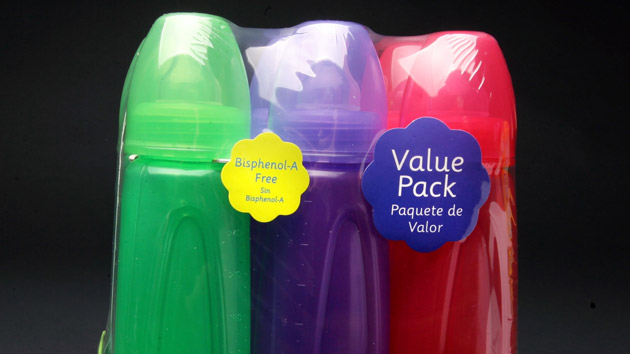
<a href="http://www.shutterstock.com/cat.mhtml?lang=en&language=en&ref_site=photo&search_source=search_form&version=llv1&anyorall=all&safesearch=1&use_local_boost=1&searchterm=pregnant&show_color_wheel=1&orient=&commercial_ok=&media_type=images&search_cat=&searchtermx=&photographer_name=&people_gender=&people_age=&people_ethnicity=&people_number=&color=&page=1&inline=160113932">MariyaL </a>/Shutterstock
You may not think much about the class of industrial chemicals called phthalates, which are used both to make plastics more flexible and to dissolve other chemicals. But you’re quite likely on intimate terms with them. According to the Centers for Disease Control, they’re found in “vinyl flooring, adhesives, detergents, lubricating oils, automotive plastics, plastic clothes (raincoats), and personal-care products (soaps, shampoos, hair sprays, and nail polishes).”
Because of their ubiquity, researchers routinely find phthalate traces in people’s urine, CDC reports. Does it matter? “Human health effects from exposure to low levels of phthalates are unknown,” the agency claims. But a growing body of research—summarized here and covered on Mother Jones here, here, here, and here—suggests they’re causing us subtle but significant harm.
The latest: A study from a team of Columbia University and CDC researchers, published in the peer-reviewed PLOS-One, found that higher levels of exposure to phthalates at the prenatal phase is correlated to lower IQ scores for kids at age seven. The researchers tracked 328 New York City women and their children through a project called the Columbia Center for Children’s Environmental Health (CCCEH). They took urine samples during the third trimester of pregnancy, looking for traces of five different phthalates. Nearly all of the samples contained them. They divided the women into four groups, ranging from the lowest to the highest phthalate readings. Then they subjected their kids to intelligence tests at age seven, and—controlling for socioeconomic and lifestyle factors—found that the ones exposed to the highest levels of two common phthalates in the womb had an IQ score, on average, more than six points lower than children exposed at the lowest levels.
None of the exposure levels, the authors report, were unusually high—they fell “within the range previously observed among general populations.”
The study builds on a similar one by the same team, published in 2012, that found that the preschoolers with the highest prenatal levels of exposure to phthalates showed lower mental and motor development than less-exposed toddlers. The new study suggests that these effects persist into school age—a disturbing finding. “We note that the consistency of the associations over time has implications for public health and regulatory policy,” the authors declare. That’s science jargon for: “shouldn’t the the feds be doing something about this?” Currently, phthalates are banned from kids’ toys, but beyond that, neither the Food and Drug Administration for the Environmental Protection Agency has taken any action to rein in their use.
In a press release from Columbia University that accompanied publication of the study, the researchers say that while it’s “impossible” to completely avoid phthalates, we can minimize our exposure to them by “not microwaving food in plastics, avoiding scented products as much as possible, including air fresheners, and dryer sheets, and not using recyclable plastics labeled as 3, 6, or 7.” That’s great advice—for consumers in the know. But in the absence of federal action, the vast majority of people, including pregnant women, will continue being exposed to them, unaware of their potential downside. After decades of federal campaigns, excessive drinking while pregnant has acquired the whiff of social stigma. Using plastic in the microwave while expecting—much less using dryer sheets and air fresheners—not so much.













